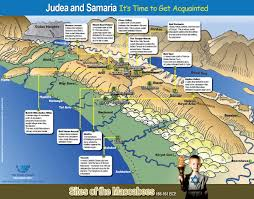 There’s an interesting story told by Rabbi Isaac Olbaum at one of his lectures about Rav Levi Bardichiva that teaches an important lesson about the pleasures of Chanukah in which we’re in the midst of celebrating:
There’s an interesting story told by Rabbi Isaac Olbaum at one of his lectures about Rav Levi Bardichiva that teaches an important lesson about the pleasures of Chanukah in which we’re in the midst of celebrating:
Rav Levi Bardichiva once walked into a room where his friends convened. He found it quite odd that they stopped their conversation so abruptly as if they were hiding something from him. After he pressed the issue, they confessed that they were embarrassed at the topic of conversation and felt he would think they were wasting valuable time that could be spent learning Torah. The friend mentioned how they marveled and were so impressed with the exquisite mansion of Count Potosky.
Count Potosky was a very rich man who had a son who was executed by the non-Jews because he converted to Judaism. The gentiles gave Potosky’s son an ultimatum: either convert back or be executed. He said ‘I’m staying a Jew’. Soon after, young Potovsky was hung and then burned, and many years later, a tree grew from his ashes. Till this day, people would point to that tree and tell you the story of Potosky.
Apparently, the friends of Rav Levi were admiring how rich he was and how he would indulge in all kind of pleasures. Rav Levi responded, ‘Did Potosky light the candles of Chanukah?’ Obviously he didn’t; but if he did, Rav Levi seems to imply, that would be the most pleasurable moment he would have experienced.
What is so special about lighting Chanukah candles?
The Rambam (Maimonides) who, besides being an authority on medicine, was a tremendous halachic figure (expert on Jewish law), is quoted as saying, ‘The sages enacted these eight days as eight days of happiness and praise (Hallel). What constitutes happiness? Happiness is interpreted as having meat and wine. Apparently, this is what gives pleasure to the body and soul. Every time there is a reference to ‘happy’, a meal is required. After a delicious meal then he’s able to sing praise (Hallel).
However, we know a meal is not required on Chanukah. Do you mean to tell me that lighting the candles is a substitute pleasure for the meal? How so?
Chanukah is often compared to the holiday of Purim; but why is a meal required for that holiday and not this one?
In the story of Chanukah, the Greeks didn’t want to kill us; they wanted to embrace us. Their goal was to destroy us spiritually (no Shabbat, no brit milah, etc). Purim, the wicked Haman wanted to destroy us physically. Therefore, we counter back by using our physicality and getting a pleasurable experience with a lavish meal. We use the physicality as a gratitude to G-d. On Chanukah, though, we use the spirituality as gratitude.
‘Everything is from the heavens except fearing G-d’. Although one has to make an effort, for the most part, we have a hard time controlling our lives whether it is making money, marriage, kids, and death. Many aspects of life are determined by the heavens with the exception of spirituality, which is determined by you. It’s our choice whether to keep Shabbat, keep kosher, and be nice to people. It’s in our hands, we’re in control.
So what are the pleasures of Chanukah? We”ll get a better picture from a little glimpse of history. Achav was the wicked king of Israel (kingdom was split Israel and Judea). The Gemarah says he has no share in the world to come. At the time, Aram, the neighboring country who was superior in might, was at a state of war with the Israelites. Aram sent a team to Achav with their demands of surrender. These demands included the Israelites to give up their possessions, wives, and children. Achav was listening and agreeing to the surrender demands. Then they said ‘give up your object of desire, your Sefer Torah.’ ‘Absolutely not!!’ he said, ‘we’ll go to war with you first!!’ he answered back. The Israelites went to war with Aram and won.
Achav, whose reputation as a rasha is unprecedented, violated everything in the book. Why all of a sudden did he say no? What does he care about a Sefer Torah? We see how a Jew can be so complex in his behavior. Every Jew has a certain Jewish pride, a deep down caring about his religion, about his people. When push comes to shove, a secular Jew will bang on the table and declare ‘I’ll show you what it means to be Jewish’. Perhaps this is the reason we are required to light the menorah by the window so that the whole world can see what miracles G-d did for his chosen people. We show the world, but for the most part, it is for us to feel good about ourselves. We light the menorah with pride like the Maccabees lit after they miraculously defeated the mighty Greek army. The pride in doing so should bring out a tremendous pleasure.




